 |
WWII Uniforms / Flight Gear Ed Nored Collection |
Personnel
Mission Reports
photos copyright ©2006-2018 by Ed Nored, used by permission
Flight Gear 1944-1945 / F-3 Heated Suit
Parachutes 1943-1945
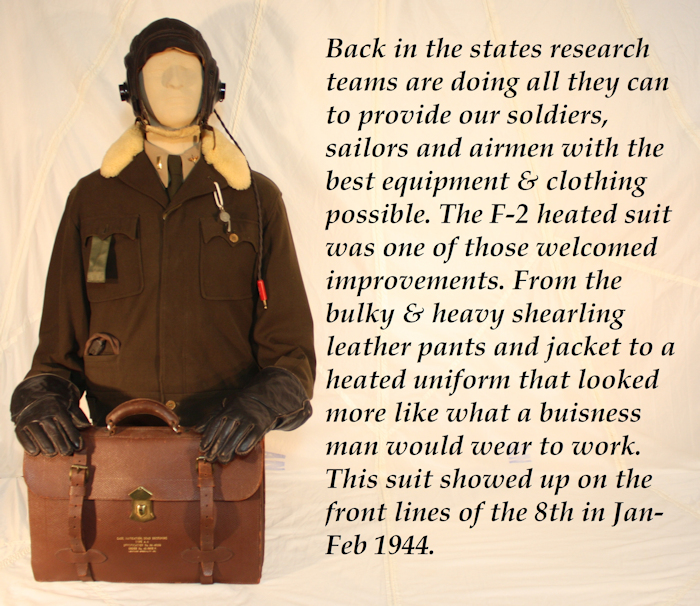
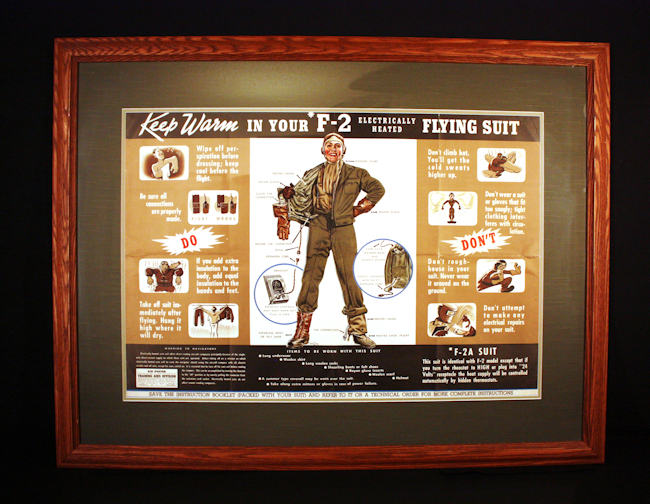
(3-4) Here is an original "Air Poster" from the "Training Aids Division" dated July 1944. Many posters were created, and then posted where air crews would be assembling. The size of this original poster is 22" X 32". (Click the image for a larger view.)
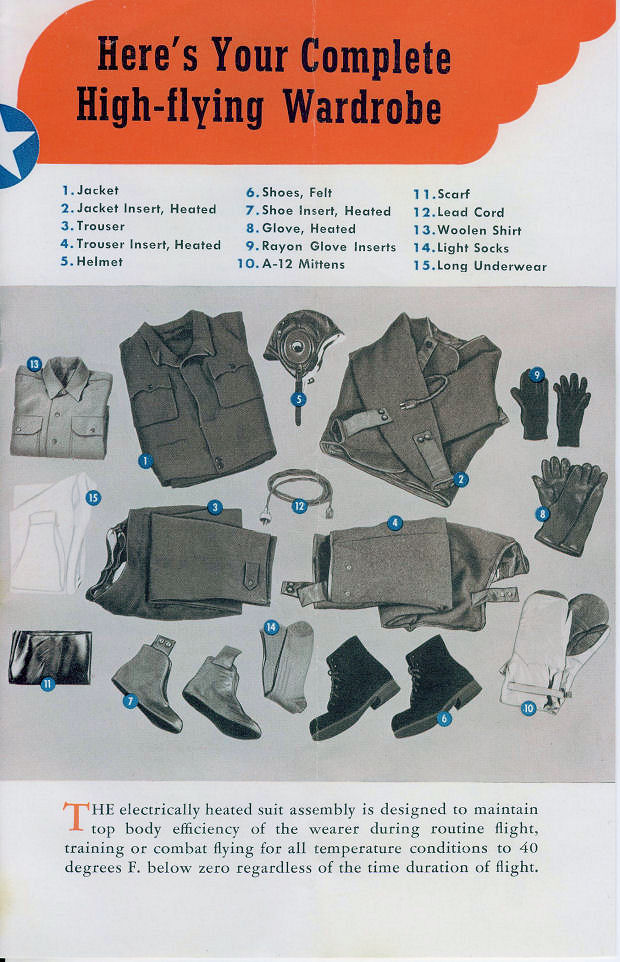
(3-1) Page 2 from the F-2 Heated Suit Instruction Booklet. Compare to the photo below.
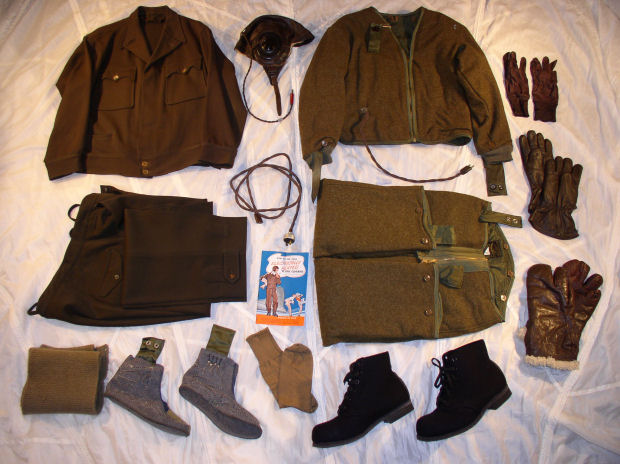
(3-2) Above is a recreation of the illustration found in the F-2 Instruction Booklet. I have left out the wool shirt and long underwear. Also, where the A-12 mittens are shown, I used the more correct A-9 mittens. The A-12 mittens may have been a mistake of the creator of the booklet since in the F-2 Booklet they show the A-12 mittens, but describe them as the A-9
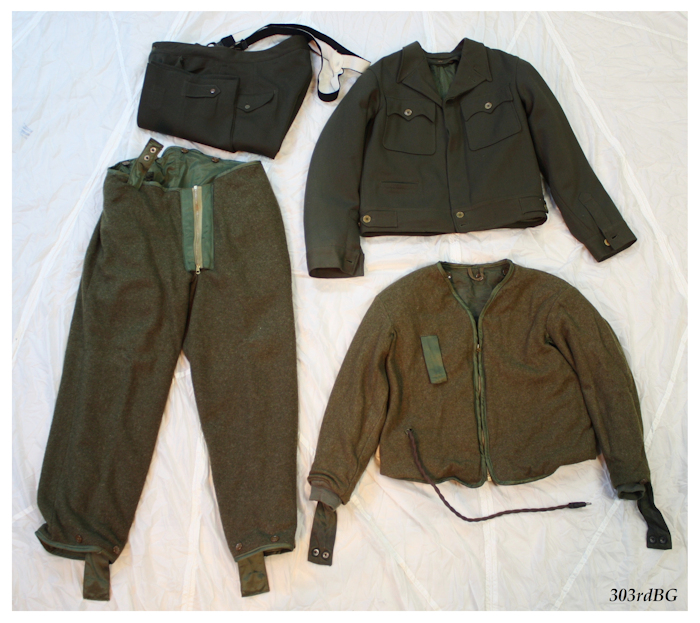
(3-xx) Shown above in an upgraded photo are the four main pieces that make up the F-2.
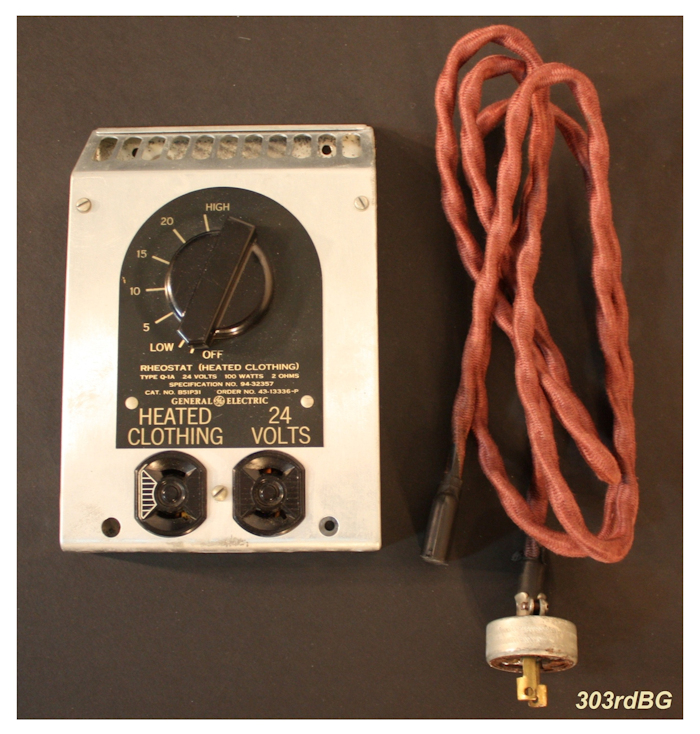
(3-xx)
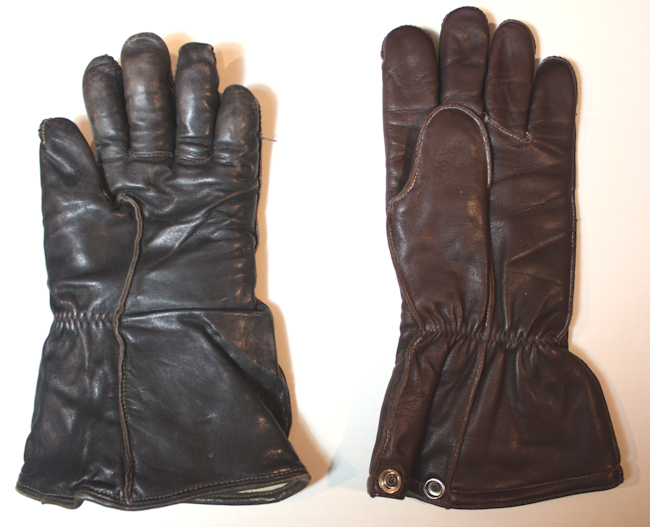
(3-xx) Shown above for comparison is the F-2 heated glove shown on the left and the F-2/3 glove shown right. Both gloves work on either suit.
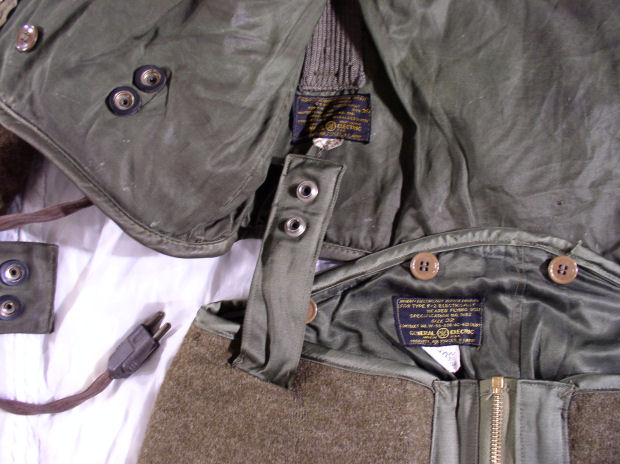
(3-3) The photo above shows the connecting points from the F-2 pants to the inside of the F-2 jacket.
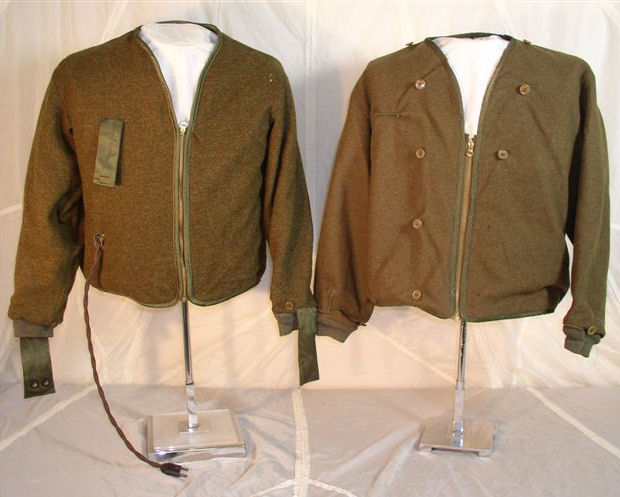
(3-5) Above on the left is a 100% complete F-2 heated jacket liner. It's a very hard item to find with its wires and connectors all intact. Most have been "demilled," de-militarized or gutted, of its wiring. The F-2 jacket liner on the right (missing 2 buttons) has been demilled. I have also noticed that for F-2 liners the buttons are inside but on the F-2A liners the buttons are on the outside
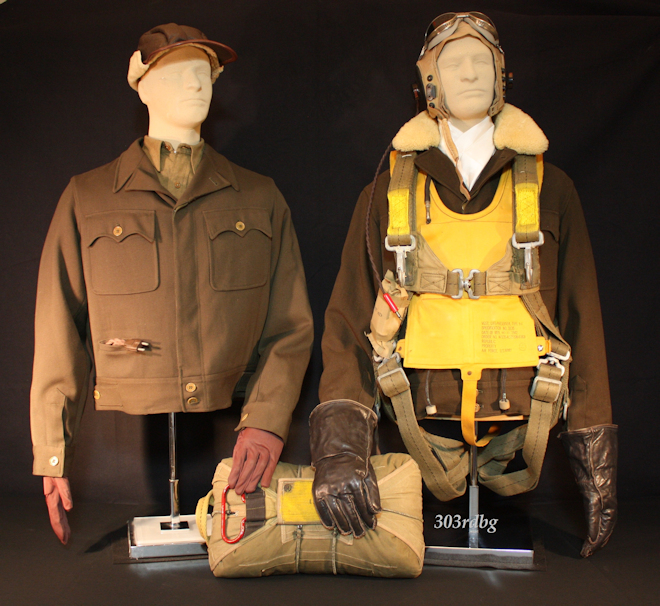 (3-xx) I'd like to honor Joe Vieira in the above and below shots showing some of what Joe wore. Joe was a radio man with the 359th BS. First of the three photos below (L-R) shows him wearing the RAF observer type harness (see photo 2-19) over a B-4 Mae West and A-2 jacket. Photo is dated September 13, 1943. In another photo during this period he is wearing the B-6 flight helmet. All of the crews at this time would have had the F-1 heated suit. 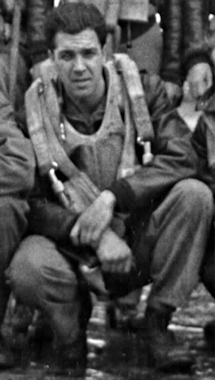
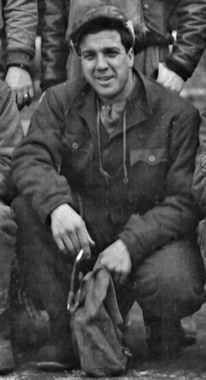
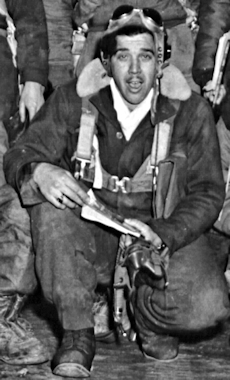 |
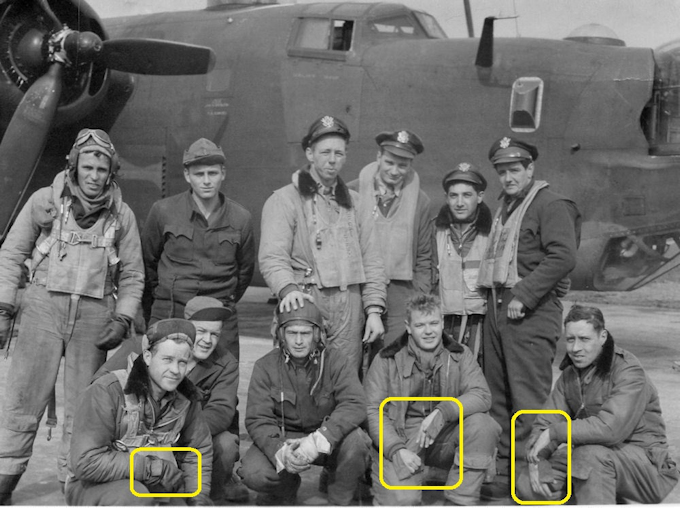
(3-xx) In this photo of a 392nd BG crew, 3 men positively are wearing the F-2 heated uniform. But if you look closer at the 3 men kneeling who are wearing B-10 jackets, the glove connectors sticking out of the cuffs of their jackets are that of the F-2. I can't tell rather they are wearing the entire uniform of the F-2 or if they're just wearing the heated liners of the F-2. The B-24 was a colder plane and, depending on their position, crewmen wore a mix of clothing just to stay warm.Also, note the man who is kneeling 3rd from the left. I am fairly certain he is wearing the very rare RAF Grow flak helmet, type M-4. Capt. Lishka has his hand on the helmet. He had just completed his 25th mission. The man standing far left, I am fairly certain, is wearing a complete F-2 suit underneath his flight suit. His flight helmet looks like the AN-H-16.
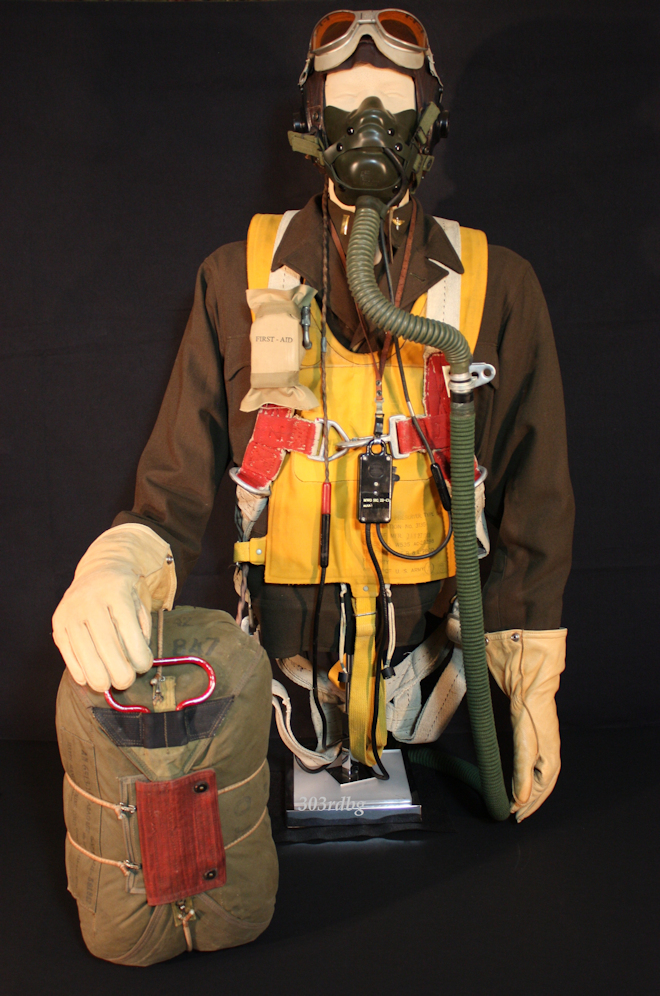
(3-xx) vvvvvvvvvvvvvvvvvvvvvvvvv
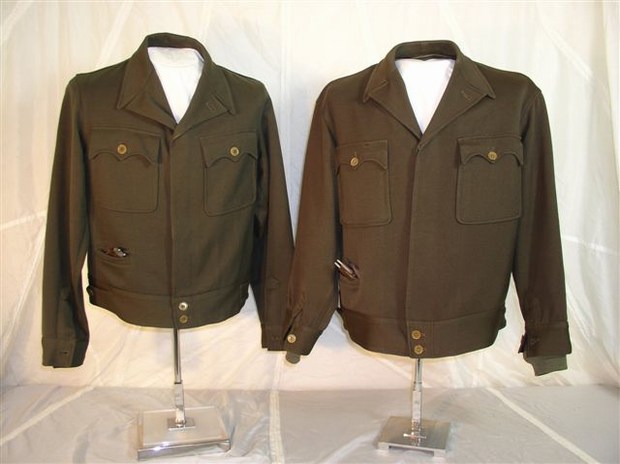
(3-6) Shown above are two examples of F-2 outer jackets for officers, based on the material from which they were made. An excellent 303rd BG photo showing crew members wearing examples shown above and below are on Lead Crew #265. Sometimes officers wore F-2 jackets that had white shearling collars. See the excellent photo on Lead Crew Mission #323 and look at 2Lt Caldwell. You can't define rank based on the collars presence or absence. I have seen photos of officers wearing the lighter shade EM grade F-2. I think in many cases men were issued what was available and what would fit them correctly. Lead Crew Mission #251 shows an example of an officer, 2Lt Morrow, and enlisted man T/Sgt Tambe wearing the F-2 heated suit with shearling collars.
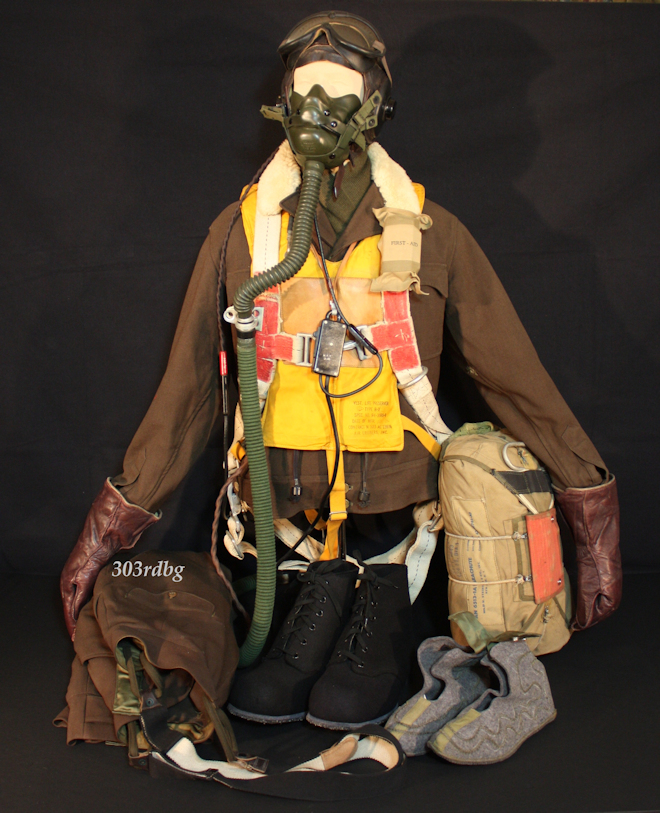
(3-xx) vvvvvvvvvvvvvvvvvvvvvvvvv
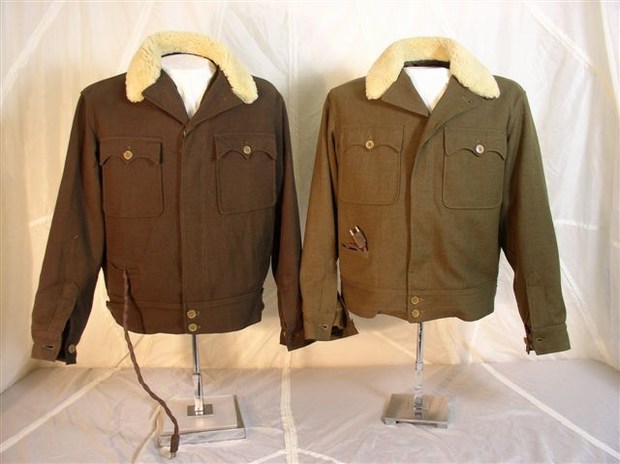
(3-7) Shown above are two examples of the F-2 outer jacket for the enlisted men, based on the material and, in the case of the one on the right, its color. An example of one of the 303rd men wearing the lighter shade F-2 and the F-2 felt boots can be seen in this photo of a wounded man on a stretcher.
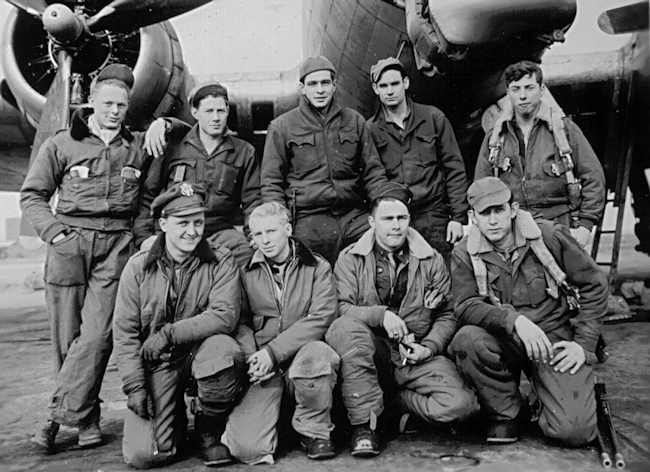
(3-xx) The above photo of the 398th BG shows one man with the EM F-2 suit, kneeling far right. Very few of the EM grade appears on the front lines of the 8th, though the officers grade F-2 suit was made from officers wool gabardine and the EM grade was in serge. Their colors were so close together in appearance that at some point an officer must have complained about it. So I speculate that towards the end of production the F-2 producing companies rushed to produce the EM grade you see pointed out above. (any clarity on this subject will be welcomed) All four men kneeling wear the F-2 Felt boot. Three of those men wear the F-3 heated suit.
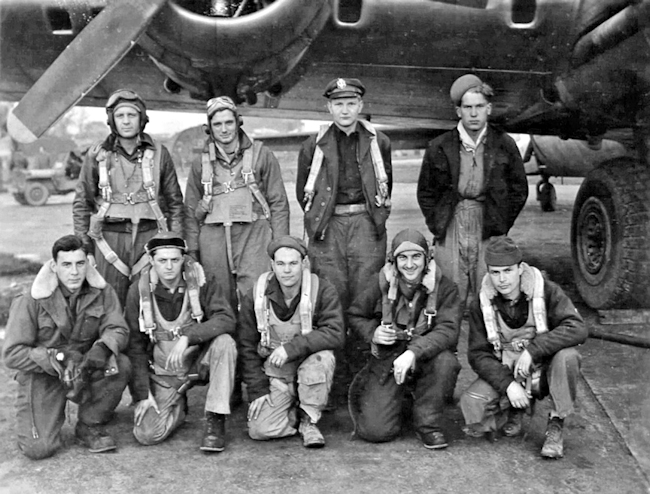
(3-xx) Shown above is another 398 BG 602 SQ crew (Rusk) .Photo taken OCT. 26 1944. Kneeling far left is another example of the EM F-2. He still has his rayon gloves on. Back row standing far left the crewman is wearing the AN-H-16 helmet with B-8 Goggles.
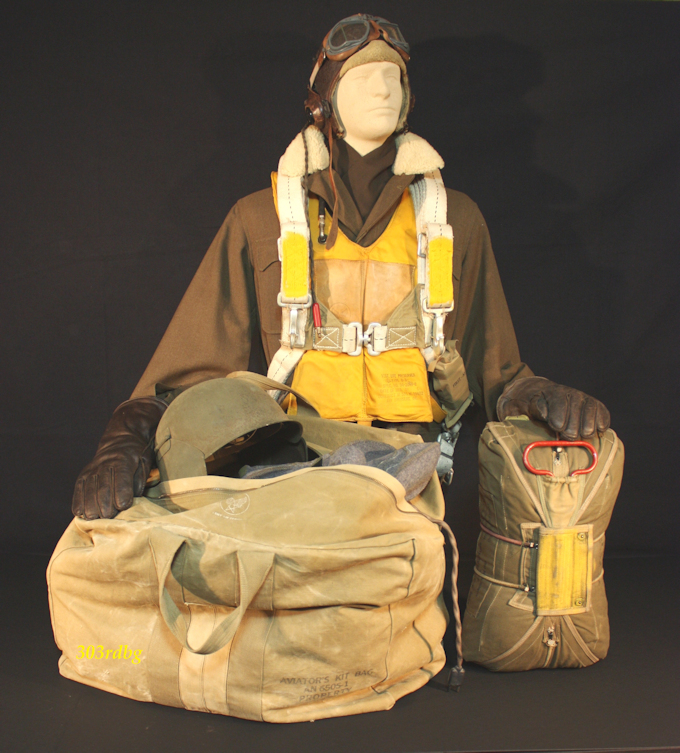
(3-xx) vvvvvvvvvvvvvvvvvvvvvvvvv
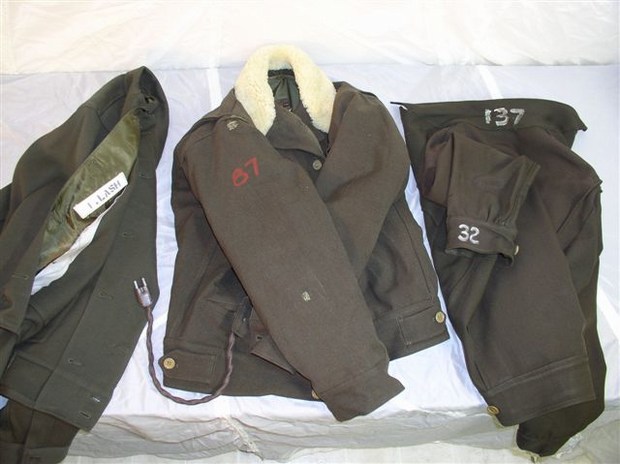
(3-8) Shown above are three examples of ID markings found on the F-2 jackets. On the far left is a white cloth name tag with name stenciled. On the remaining two, numbers have been painted on to keep track of the item.
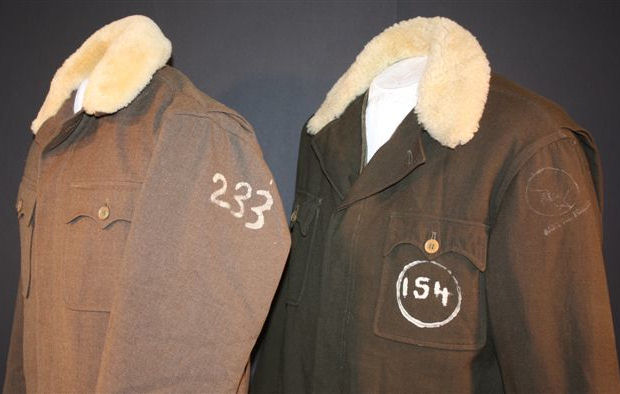
(3-9) Shown above are two recently acquired examples of painted markings on the F-2 outer jackets. Notice the fading image of an Army Air Force wing and star stamped on the shoulder of the jacket on the right. This is the first F-2 outer jacket I have seen with this on it.
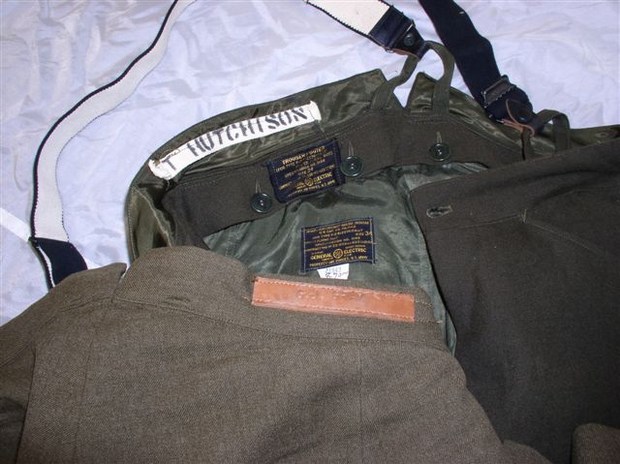
(3-10) Shown here are two more examples of ID markings used on the F-2 pants. Also notice the label for the heated liner for the pants and another label for the outer pants. Note how the heated pant liner is buttoned into the outer pants. As far as I can determine, the black and white suspenders are the more correct ones for the F-2.
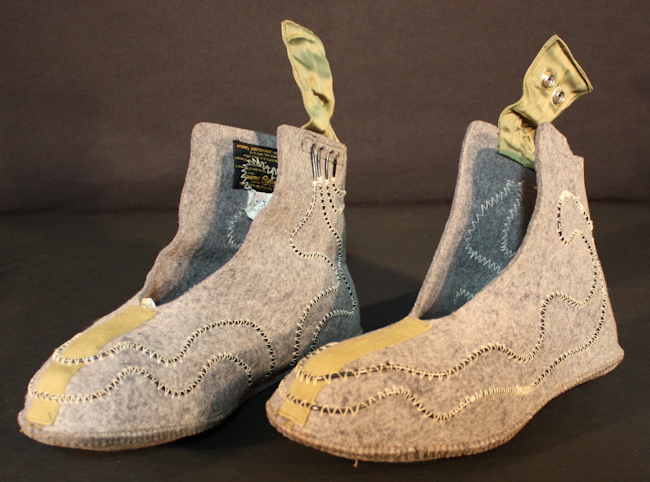
(3-11) Shown above is the heated shoe for the F-2 heated suit. It was made by General Electric.
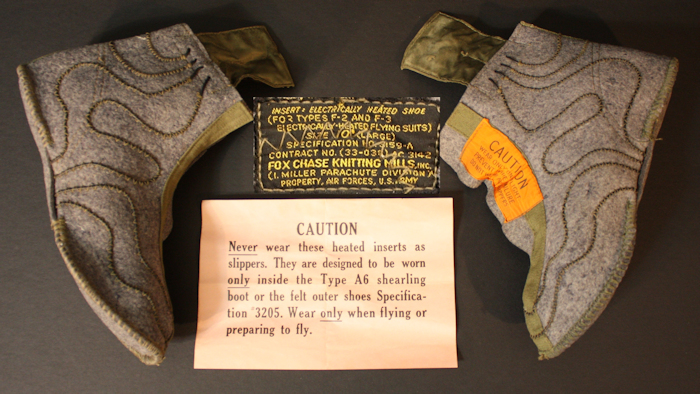
(3-12) Shown above and below are the somewhat improved, INSERT: ELECTRICALLY HEATED SHOE, for the F-2 and F-3 heated suits. See label above. Included in the original packaging was the caution notice, shown above, warning not to wear it as a slipper.
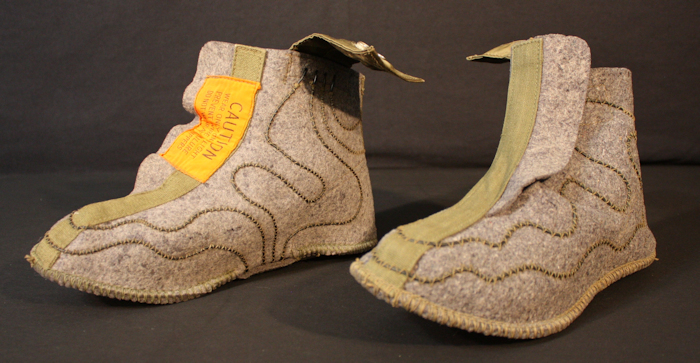
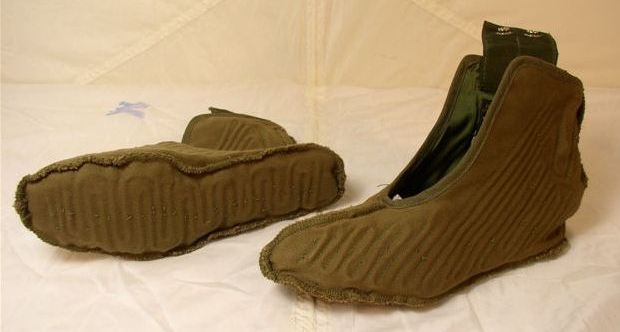
(3-13) Shown above is a pair of heated shoe inserts for the F-2A. Made by the UNITED THERMO-STABLE CORP.
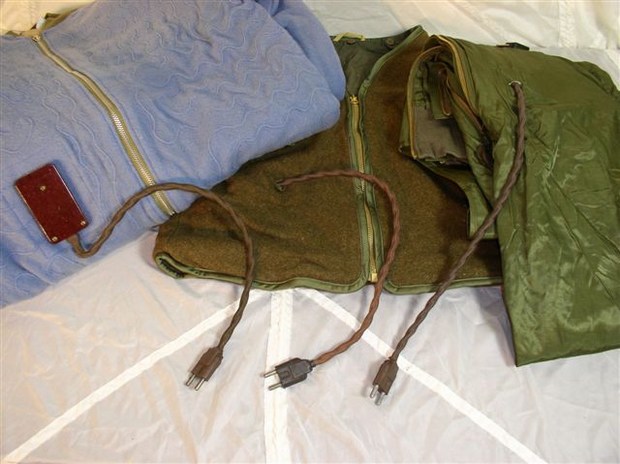
(3-15) The cord used to plug into the extension cord (not shown) and then into the plane is the same in all 3 heated suits. Shown left to right are the F-1, F-2 and F-3.
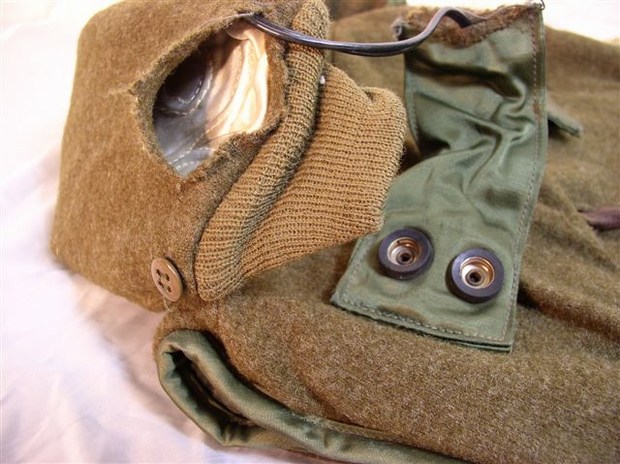
(3-16) The connector to the gloves has torn loose on one of the sleeves on an F-2 heated jacket and I'm able to show you the wired liner inside. As you can see, the wires are themselves sewn into a white material that make up another jacket all its own. Think about the production cost on this suit. Quite impressive!
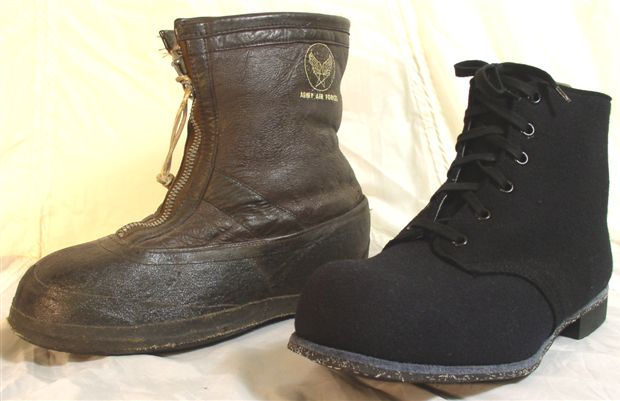
(3-17) Top left is another example of the A-6 boot compared to the F-2 felt boot. This A-6 boot is made by the Bristolite Company. The F-2 boot is made by the Little Falls Felt Shoe Company. I have seen examples of the F-2 boot with the AAF logo applied. Examples of the F-2 boot being worn can be seen at Lead Crew #325 on 2Lt Mauger. On Lead Crew #334, T/Sgt Bostick is wearing a B-10 over his F-3 suit and F-2 boots. See the glove connector hanging from the cuff. The 3rd example is of T/Sgt Joe Vieira, shown here in his first tour on Lead Crew Mission #126, and during his second tour on Lead Crew Mission #345. In the Feb. 6, 1944 photo of the 358th M.L. Smith Crew, we see three men wearing the F-2 heated suits. Two men wear the F-2 boots. Also note the three men with the zippered type parachute first aid kit.
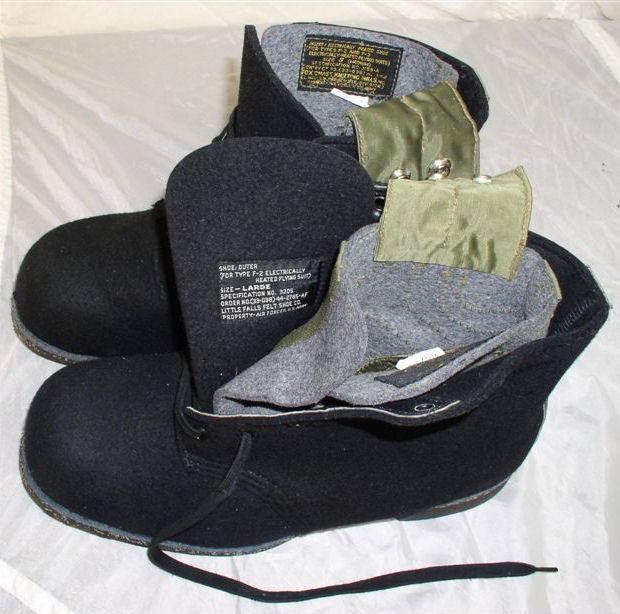
(3-18) Shown above is the heated shoe insert placed inside the F-2 boot. Note the shoe label and label on the insert. A crew member wearing the shoe is the 358th Worthley crew. See the second man from right, kneeling. Major Charles Kerwin is wearing the F-2 boot in the lead crew photo for Mission #350. Also note the story of the Major's baby shoes.
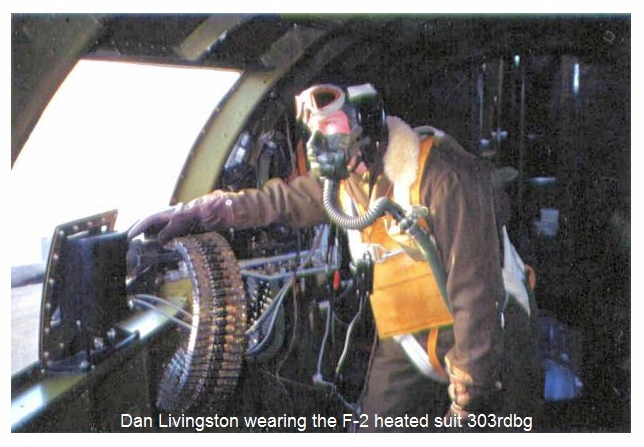
(3-19) This waist gunner wears the F-2 heated uniform, the unmarked (redgroup) Q.A.C., B-4 or AN6519-1 Mae West, AN-6530 goggles, A-14 O2 mask and heated gloves. He's all hooked up and ready to go.
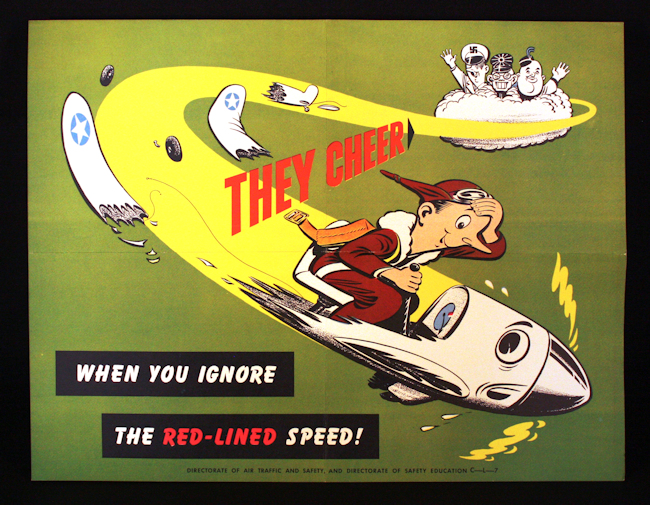
Above is an original WWII Safety Poster reminding pilots in training of the many mistakes new pilots make. All of the posters are 17 X 22 inches in size.
| The uniforms and gear presented here are from the private collection of Ed Nored. Any reproduction or other use of these copyrighted photographs is strictly forbidden. 303rdBG.com was granted exclusive rights to these photographs solely for historical purposes. The items shown are not for sale. |